ABOUT CHANGWON
Sculptors
창원의 조각가 Sculptor
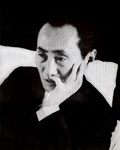
김종영 1915 - 1982 Kim Chong Yung 경남 창원<(구) 창원>
한국 현대 추상조각의 선구자 불각(不刻)의 미 ‘김종영’
- 삶이 곧 예술이고, 예술이 곧 삶이었던 한국현대조각의 거장 ‘김종영’
작가소개
우성 김종영은 한국현대추상조각의 선구자로 일컬어지는 조각가이자 교육자이며 또한 동양과 서양의 정신문화를 고루 섭렵하고 세계에 대한 통찰을 예술의 목표로 삼아 이를 조형화한 작가이다. 그의 예술세계는 인생, 예술, 사랑이라는 이념 아래 꽃피운‘초월과 절대를 향한 탐구’였으며 지금도 그의 많은 후학들이 큰 스승을 본받아 창작과 교육의 길에 매진하고 있다.
혼탁한 시대에도 고고한 선비와 같은 작가로 또한 교육자로 헌신하였던 그의 삶과 예술은 20세기 한국 현대조각사에 큰 발자취를 남기고 있다.
※ 이원수 작사 작곡 동요 <나의 살던 고향>에 등장하는 "꽃 대궐"이 바로 김종영의 생가이다.
작품세계
'불각(不刻)의 미'
김종영의 예술세계는 서구 근대 및 동양예술의 이념이자 기초정신이기도 한 단순미와 물질과 정신을 잇는 진리체계의 파악 그리고 남다른 실험정신이 모여 만들어진 것이다. 김종영은 서구의 생명주의 조각의 외형을 수용하면서도 동양의 자연관에 비추어 작품을 재해석하였다. 이는 서예에서 보이는 ‘구조의 미’를 입방체로 환원시킨 입체주의에서 확인할 수 있다. 단순하고 반복적인 형태의 작품에서는 미니멀리즘(Minimalism)과 동양사상인 ‘불각(不刻)의 미’의 조우를 보여준다.
"깎지 않는다는 것은 작업의 중도포기 혹은 휴지(休止)가 아니라 공간의 여백을 허용하는 것과 같은 맥락의 여유를 의미한다."
-

새, 9x7x55.5cm, 나무
1953 제2회 국전 출품작 -
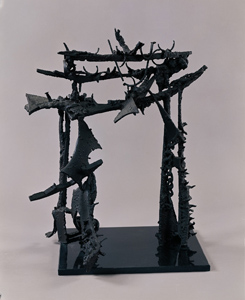
전설, 65x70x77cm, 철, 1958
-
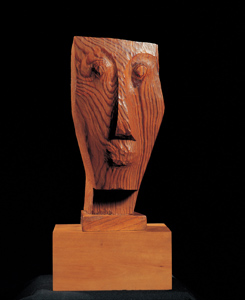
자각상, 12x15x25cm, 나무, 1971
<출처 : 김종영미술관>
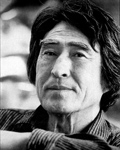
문 신 1923~1995 Moonshin 경남 창원<(구) 마산>
추상조각의 거장 자연과 생명의 시메트리 ‘문신’
- 나는 노예처럼 작업하고, 신처럼 창조한다.
작가소개
문신文信은 일본에서 출생하여 마산에서 유년시절을 보냈다. 일본 동경 미술학교에 입학하였고, 1961년 새로운 예술세계를 경험하고자 프랑스로 가 추상 회화와 조각에 대한 열정을 불태웠다.
1970년, 프랑스 뽀르-바까레스 국제조각심포지엄에 출품한 ‘태양의 인간’을 통해 세계적인 조각가로 명성을 날리게 된다. 이후 프랑스, 독일, 스위스, 이란 등 세계 곳곳에서 전시회를 가졌고 1980년 고향 마산에 영구 귀국하였다.
문신은 자신의 숙원이었던 문신미술관을 고향 마산에 직접 건립하였으나 안타깝게도 이듬해 인 1995년 지병으로 타계하고 만다. 문신의 유언에 따라 그의 미술관은 (구)마산시에 기증되어 “마산시립문신미술관”(2004.4)으로 다시 개관하였다.
현재 올림픽 공원에 있는 25m 높이의 ‘올림픽 1988’은 1988년 서울올림픽을 기념하여 제작된 것으로 그의 대표적인 작품으로 인정받고 있다.
작품세계
'시메트리(symmetry)'
문신 조각의 가장 두드러지는 형태적인 특징은 대칭적 구조이다. 신에 의해 창조된 모든 유기체들도 대칭적인 구조로 이루어져 있다. 인간도 마찬가지이다. 문신이 추구한 대칭성은 절대적으로 순수한 추상적 구조인 동시에 자연의 유기체적 형태의 구조를 반영한다. 그렇기 때문에 문신의 추상 조각이 신의 창조물인 자연을 연상시키는 것이다. 문신은 엄격한 기계적 대칭성을 추구하지 않았다.
자연의 형태들이 다소 불균형하고 오묘하리 만큼 미세하게 대칭성에서 약간씩 벗어나듯이, 문신은 작품의 대칭성에 자유롭고 불완전함이 스며들도록 의도적으로 내버려 두기도 하였다.
"문신의 조각은 하나의 생명체로 탄생되었다."
-
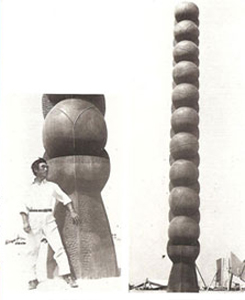
태양의 인간 130×120×cm
아비동통나무, 1970 -

개미 41×9×9㎝,
브론즈 1973 -

올림픽 1988 800X830X2500㎝
스테인레스 스틸, 1988
<출처 : 창원시립마산문신미술관, 숙명여대 문신미술관, 소마미술관>

박종배 1935 ~ Park Chong Bae 경남 창원<(구) 마산>
한국 현대 조각의 새로운 지평 '박종배'
- 직선과 곡선의 미학
작가소개
그의 조각가로의 본격적인 시작에는 조용한 성품 뒤에 깔린 강한 도전정신이 크게 작용하였다.
박종배는 젊음과 패기로 1960년대 한국 현대조각을 주도하였으며 국무총리상 수상(1964년)에 이어 이듬해 <역사의 원>으로 대통령상을 수상하면서 한국미술사에서 조각사상 처음으로 국전에서 최고상을 수상한 영광과 추상조각을 공식적으로 인정받게 한 기념비적인 업적을 한 몸에 안게 되었다.
파리비엔날레, 상파울로비엔날레에 한국대표로 참여하며 일찍이 국제무대에 데뷔하였다. 홍익대학교 교수로 재직하던 중 새로운 작업환경과 작품세계를 위한 도약으로 도미하여 1969년부터 미시건주에 정착하여 한국과 미국을 넘나들며 작품 활동을 해오고 있다.
작품세계
박종배의 작품들은 마치 영원의 세계와 마주하고 있는 듯한 지속성과 연속성을 느끼게 한다.
간결한 형태의 작품은 내재된 생성의 에너지로 끊임없는 풍부함을 전달해 오기 때문이다. 그것은 인간의 삶과 기억을 담고 있으면서도 고유하고 독립된 자율성으로 그 무엇과도 비견할 수 없는 조각자체의 삶을 살고 있다.
"형태에서 드러나는 기하학적인 것과 유기적인 것은 상응과 결합에서 나오는 신비한 힘을 표출한다. 그것은 동양적인 것과 서양적인 것의 교차관계에서 오는 신비한 힘의 상징이다."
-
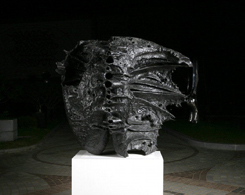
역사의 원
국전 대통령상 수상작, 1965 -

다른 두 개의 교차
7.5X3.0X3.2(m) 청동, 1988 -
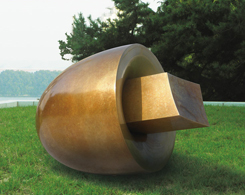
못과 대지, 2010
<출처 : 창원시립마산문신미술관, 소마미술관>
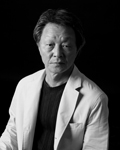
박석원 1942 ~ Park Suk Won 경남 창원시<(구) 진해시>
한국 미니멀 조각의 거장 조각의 시인 ‘박석원’
- '적(績)', 새로운 조각 언어의 탄생
작가소개
박석원은 일찍이 미술계에서 촉망받는 작가로서 두각을 나타냈다. 1968년과 1969년에 국전에서 국회의장상을 연이어 수상하였고, 1974년에는 예술원장상을 거머쥐었다. 이보다 앞선 1962년과 1965년에는 각각 특선을 차지하기도 했다. 박석원은 1972년 그의 나이 30세에 해당할 무렵 당시 최고의 권위를 인정받았던 국전의 추천작가 반열에 오르게 된다.
1968년 국전에서 국회의장상을 수상한 <초토>는 “우리나라 앵포르멜 또는 표현주의 추상조각의 대표적 작품이자 한국현대조각의 한 이정표”라는 찬사를 받기도 했다.
이 무렵에 파리비엔날레(1967), 상파울로 비엔날레(1969), 시드니 비엔날레(1973) 등 세계 유수의 여러 국제전에도 참여하게 된다.
작품세계
박석원은 사물의 ‘미묘한 정경’과 ‘내면의 전이’를 중시한다. ‘내면의 전이’는 사물의 속성을 관찰대상으로 여기는 것이 아니라 관조적으로, 즉 물상에 대한 주관적 반응을 거치면서 감각적이며 직관적으로 풀어간다는 것을 의미한다. 아무런 색깔도 입히지 않고 어떤 무늬도 지니지 않았지만 그의 작업에 저절로 이끌리는 것은 ‘고감도의 조형력’이 투영되었기 때문이며, 사물의 미묘한 속성을 ‘섬세한 감각의 촉수’로 끄집어내었기 때문이다. 그는 억지나 부자연스러움을 걷어내고 편하고 잔잔하게 작품을 이끌어간다. 그리하여 고요함 속에 부드러움을, 편안함 속에 안정감을, 단순함 속에서 내적 질서를 각각 허락한다.
근래에는 표면이 울퉁불퉁하고 주름이 잡히며 휑하니 구멍이 나 있는 데서 볼 수 있듯이, 그의 조각은 규칙성과 인위성에서 벗어나 자연의 본성을 되찾아주기라도 하듯이 사물의 존재감을 증폭 시키고 그것과의 일체화를 도모하고 있다.
-
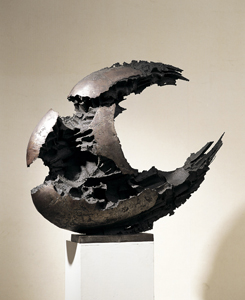
초토(焦土), 130×130×50㎝,
철, 1967 -
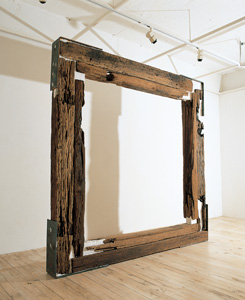
적의9317, 250x250x30cm
침목, 석고, 철, 1992 -
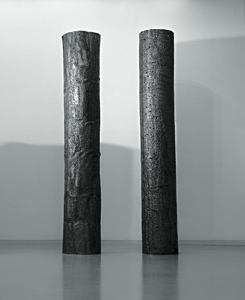
적의 051005, 240x40x40cm,
철, 2004
<출처 : 창원시립마산문신미술관, 작가 제공>
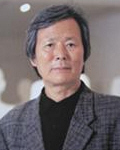
김영원 1947 ~ Kim Young Won 경남 창원<(구) 창원>
한국적 사실주의 인체조각의 완성 생명의 조각가 ‘김영원’
- 사실주의 조각의 독자적인 개념의 정립,‘생명성(生命性, living vitality)’
작가소개
김영원은 1947년 경남 창원에서 태어나 홍익대학교 미술대학(1975) 및 동대학원(1977)을 졸업하였으며 국내외에서 다수의 개인전을 가졌다.
1994년 제22회 상파울로비엔날레 참여 작가로 선정되었을 당시, 넬손 아킬라는 “동양의 정신과 현대미술이 절묘하게 조화를 이룬 비엔날레 최고의 작가”라고 극찬한 바 있다.
광화문 세종대왕상의 작가로 대중에게 친숙한 조각가 김영원은 추상미술이 화단의 주류를 차지했던 1960~70년대에 독자적인 사실주의 조각을 기반으로 활동을 시작하여, 한국 현대조각에서는 드물게 근 40여 년 동안 인체조각이라는 일관된 방법으로 ‘인간실존’을 주제로 자신의 예술 세계를 발전시켜온 한국 사실주의 조각의 거장이다.
작품세계
생명성은 그의 조각예술이 존재해야 할 이유 그 자체이며 무엇 때문에 조각을 하느냐는 데 대한 답변이라 할 수 있다. 그에게서 생명성은 생물학적으로 살아있는 것들을 정의해 줄 키워드가 아니다. 이 용어는 인간을 포함해서 사물이 어떠할 경우에 진실로 살아있다고 말할 수 있는지를 시사한다.
그의 신체는 영혼이 없는 물질로서의 신체를 실재라고 믿는 현대인들의 의식을 그 극한에서 다룬다.
김영원은 현대인의 ‘신체적 사유’(cogito corporalis)를 절하하고, 절하의 이유를 설득시키기 위한 하나의 방법으로서 리얼리즘 조각양식을 창도했다. 그의 리얼리즘은 이 때문에 현대조각사에서 그 유례를 찾기 어려울 뿐 아니라, 특히 매스 중심의 서구 리얼리즘과 궤를 달리함으로써, 후기 산업사회와 물질만능주의 시대에 조각예술이 존재해야할 이유를 제시한다.
-
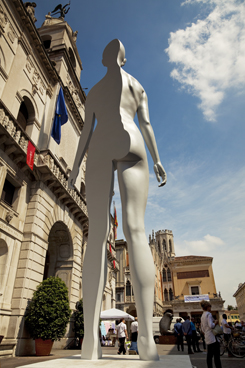
그림자의 그림자(홀로서기),
800x220x190cm, 브론즈, 2009 -

그림자의 내면, 180x54x145cm,
브론즈, 2014 -
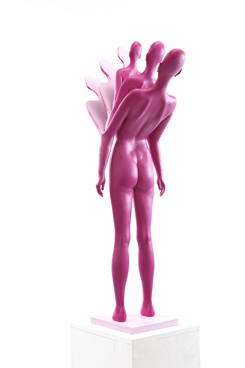
그림자의 그림자 (꽃이 피다),
94x35x45cm, 브론즈, 2015
<출처 : 창원시립마산문신미술관, 작가 제공>

Kim Chong Yung 1915 - 1982 Changwon, Gyeongnam <Formerly Changwon>
A Pioneer of the Modern Korean Abstract Sculpture The Beauty of Non-Sculpting, Kim Chong Yung
- "Kim Chong Yung" whose life was the art, and the art became his life. Master of the Modern Korean Sculpture
About the Artist
Famously known as a pioneer of the Modern Korean Abstract Sculpture, Woosung Kim Chong Yung devoted his life as a sculptor and educator who aimed to gain deep understanding on the world by studying both the oriental and western philosophy and culture and expressing them in the form of sculptures. His world of art was “a constant search for transcendence and absolutism” flourishing under the ideology of life, art, and love. Many artists who studied under Kim are still following the footsteps of their great master by dedicating their works and life for art and education.
His life and works have made significant contributions to the modern Korean history of sculpture in the 20th century as he devoted his life as a noble artist and educator even in the midst of the darkest time of our history.
※ Lee Won Su, a famous children's story writer, portrayed Kim Chong Yung's birthplace as a "flower palace" in the lyrics of his chidlren's song.
Sculptures
'The Beauty of Non-Sculpting'
Kim Chong Yung’s art is a collection of the beauty of simplicity, which served as an ideology and spirit of the modern western and eastern art, and the truth system that connects physical and psychological worlds with his extraordinary experimental spirit. Accepting external features of western sculptures based on the vitalism, Kim also gave reinterpretation from the oriental view of nature and reflected them in his works that translated the ‘structural beauty’ of calligraphy into cubes. Through the simple and repetitive forms in his works, a harmonious combination of minimalism and the oriental ‘beauty of non-sculpting’ is expressed.
"Non-sculpting does not mean abandonment or a hiatus of work but refers to a relaxed attitude of leaving blank space."
-

Bird, 9x7x55.5cm, wood, 1953 Entry in the 2nd National Art Exhibition
-

Legend, 65x70x77cm, iron, 1958
-

Self-Portrait Sculpture, 12x15x25cm, wood, 1971
<Source: Kim Chong Yung Museum>

Moon Shin 1923~1995 Changwon, Gyeongnam <Formerly Masan>
Master of Abstract Sculpture Moon Shin, Symmetry of Nature and Life
- I work like a slave and create like a god.
About the Artist
Moon Shin was born in Japan and grew up in Masan, Korea. After studying at Nihon Art College in Japan, he left for France in 1961 to experience a new world of art and pursue his passion in abstract painting and sculptures. He earned an international reputation as a creative sculptor with his work "Soleillonautes" at the International Sculpture Symposium held in Port Barcares, France in 1970. After holding exhibitions in countries around the world, including France, Germany, Switzerland and Iran, he finally settled down in his hometown Masan in 1980.
His lifetime wish of building his own museum in his hometown of Masan finally came true in 1994. Unfortunately, he passed away the next year after a long battle with a chronic illness. In accordance with the will of the deceased, his museum was donated to the former Masan City and reestablished as "Masan City Moonshin Museum of Art" in April 2004.
Moon Shin's most representative sculpture is the monument titled "The Harmony of the Olympics," which was built to commemorate the 1988 Seoul Olympic Games, standing 25 meters tall in Seoul Olympic Park.
Sculptures
Symmetry
Moon Shin's pieces achieved unique style in forms of symmetry, such as shapes of all the living creatures created by God, including human-beings. Moon Shin's symmetry represents absolutely pure abstract structures as well as the nature's organic structure. That is the reason his abstract sculptures remind the audience of the nature created by God. Strict or mechanic symmetry was not something that Moon Shin had pursued.
Just as all the forms in the nature are subtly imbalanced and asymmetric, Moon Shin would deliberately left some elements of slight freedom and incompleteness in the symmetry of his works.
"Moon Shin's sculpture was born as a living organism."
-

Soleillonautes 130×120×cm, wood, 1970
-

Ant, 41×9×9㎝, bronze 1973
-

The Harmony of the Olympics 800X830X2500㎝, stainless steel, 1988
<Source: Changwon City Masan Moonshin Museum of Art, Sookmyung Women’s University Moonshin Museum, SOMA Museum of Art>

Park Chong Bae 1935 ~ Changwon, Gyeongnam <Formerly Masan>
Park Chong Bae, a New Horizon of the Modern Korean Sculpture
- Beauty of straight lines and curves
About the Artist
What drove Park Chong Bae’s career as a sculptor was his strong spirit of challenge hidden behind his reserved personality. Filled with youthful ambition, he led the modern Korean sculpture in the 1960’s. By winning the Prime Minister Award in 1964 and the Presidential Award for his ‘Circle of History’ the following year, he had the honor of becoming the very first artist winning the highest award in the National Art Exhibition for a sculpture and also achieving a monumental accomplishment of having an abstract sculpture officially recognized.
He made his international debut by participating in the Paris Biennale and the Sao Paulo Biennale at a young age. While serving as a professor at Hongik University, he left for the U.S. and settled down in Michigan in 1969 to seek a new working environment and make a new leap forward in his world of art. He has since created and exhibited his works in both Korea and the U.S.
Sculptures
Park Chong Bae’s sculptures give an impression of persistence and continuity as if the audience faced the world of eternity. That is because the vital energy inherent in the simple forms of his pieces conveys endless abundance. They contain the life and memory of human-beings and live the incomparable life of sculptures themselves with distinctive and independent autonomy.
"The geometric aspect and the organic aspect revealed in their forms express a mysterious power flowing from correspondence and combination – a power coming from the intersection of oriental and occidental elements."
-

Circle of History Presidential Award in the National Art Exhibition, 1965
-

Intersection of Two Different Things, 7.5X3.0X3.2(m) bronze, 1988
-

The Pond and the Land, 2010
<Source: Changwon City Masan Moonshin Museum of Art, SOMA Museum of Art>

Park Suk Won 1942 ~ Changwon, Gyeongnam <Formerly Jinhae>
Master of the Minimal Sculpture in Korea Sculptural Poet, Park Suk Won
- "Weaving," Birth of new sculpture language
About the Author
Park Suk Won stood out as a promising sculptor in the artistic community in his early days. He won the Speaker of the National Assembly Award in the National Art Exhibition for two consecutive years in 1968 and 1969, and also received the President of the National Academy of Arts Award in 1974. He had previously won a special award in 1962 and 1965. In 1972 when he reached 30 years of age, he emerged as one of the recommended artists in the National Art Exhibition, which was the greatest honor for artists at the time.
Scorched Earth,” which earned him the Speaker of the National Assembly Award in the National Art Exhibition in 1968, was critically acclaimed as “the most iconic Informel or Expressionist abstract sculptural work in Korea and a milestone in the modern Korean sculpture.”
Around this time, he also participated in distinguished international exhibitions around the world, including the Paris Biennale (1967), the Sao Paulo Biennale (1969), and the Sydney Biennale (1973).
Sculptures
Park Suk Won emphasizes the “subtle scene” and “internal transition” of objects. “Internal transition” means that one should not regard the qualities of objects as the target of observation but instead should take a contemplative view on them. In other words, one should perceive objects sensuously and intuitively through a subjective response. Although no color or pattern is added to his works, they are fascinating because they contain “highly sensitive shaping” projected onto them and reveal the subtle qualities of objects with “tentacles of a delicate sense.” He carves out contrivance or unnaturalness and leads his works in a comfortable and calm manner, thereby allowing smoothness in tranquility, stability in comfort, and internal order in simplicity.
As seen from the rugged surfaces, wrinkles, and empty holes in his recent works, his sculptures amplify the presence of objects and pursue integration with them as if his pieces were trying to help the nature regain its true colors.
-

Scorched Earth, 130×130×50㎝, iron, 1967
-

Accumulation of Meanings 9317, 250x250x30cm, Rail tie, plaster, iron, 1992
-

Accumulation of Meanings 051005, 240x40x40cm, iron, 2004
<Source: Changwon Moonshin Museum of Art, Park Suk Won>

Kim Young Won 1947 ~ Changwon, Gyeongnam <Formerly Changwon>
The Completion of the Korean Realistic Human Body Sculpture Sculptor of Life, Kim Young Won
- Defining the Independent Concept of the Realistic Sculpture, "Living Vitality"
About the Artist
Born in Changwon, Gyeongnam in 1947, Kim Young Won graduated from College of Fine Arts, Hongik University in 1975 and graduate school of the same university in 1977. He has held a number of individual exhibitions both in and out of Korea.
When Kim was selected as a participating sculptor in the 22nd Sao Paulo Biennale in 1994, Nelson Aguilar highly praised him as“the best artist of the Biennale who has brought the exquisite harmony of the oriental spirit and the modern fine arts.”
Kim is best known to the Korean public for the statue of King Sejong the Great that sits in the Gwanghwamun Plaza, central Seoul. In the 1960s and 1970s when abstract fine arts were the mainstream of the art circle, he started his career as a realistic sculptor and has become the master of the Korean realistic sculpture. He is a rare figure in the Korean modern sculpture scene in that he has been developing his own world of art for over 40 years by consistently creating human body sculptures under the theme of “human existence.”
Sculptures
“Living vitality” is the raison d'etre of his sculptural art itself and also the answer to the question of why he ever makes sculptures. For him, living vitality is not a keyword that defines the living organisms in a biological sense. This term rather implies when one can say that objects including human beings are truly alive.
Kim Young Won’s body sculptures deal with the extremity of the cognition of people in modern days who believe that a human body is in existence as soulless matter. He devalues the 'cogito corporalis' of modern people and advocates the realistic sculpture style to convince people of the reason for the devaluation. In this sense, his realism is unprecedented in the history of modern sculpture. In particular, by taking a different path from the western realism centered on the masses, his realism presents the reason for the existence of sculptural art in the post-industrial society and in the age of materialism.
-

The Shadow of a Shadow (Standing Alone), 800x220x190cm, bronze, 2009
-

The Inner Side of a Shadow, 180x54x145cm, bronze, 2014
-

The Shadow of a Shadow (Flower Blooming), 94x35x45cm, bronze, 2015
<Source: Changwon City Masan Moonshin Museum of Art, Park Suk Won>




